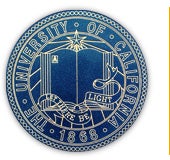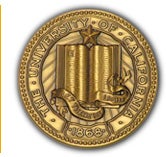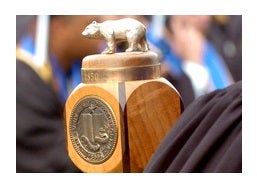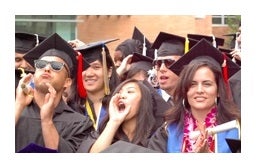
Tradition & Symbols
The UCR Pipe Band
The UCR Pipe Band performs on the campus and surrounding community at formal and informal events, including parades, memorials, highland games, athletic events, alumni events, Chancellor's events and Commencement. The band encompasses a diverse group of musicians and performers offering a wide variety of Celtic music played on bagpipes and drums. Visit their website to find out more about the UCR Pipe Band.
The Regalia
In 1895, American Universities adopted a code for uniformity in academic dress. These codes, handed down from European academic ceremonies, represent different degree levels, field of study, and the institution from which the degree was earned. Each color, worn on tassels, hoods, velvet and satin trimmings, represents a specific educational discipline:
- Arts, Letters, Humanities: white
- Commerce, Accountancy, Business: drab
- Economics: copper
- Education: light blue
- Engineering: orange
- Music: pink
- Philosophy: dark blue
- Public Administration: peacock blue
- Medicine: green
- Science: golden yellow
- Theology: scarlet
- Social Work: citron



